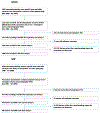Mean nocturnal respiratory rate predicts cardiovascular and all-cause mortality in community-dwelling older men and women
- PMID: 31151958
- PMCID: PMC7864583
- DOI: 10.1183/13993003.02175-2018
Mean nocturnal respiratory rate predicts cardiovascular and all-cause mortality in community-dwelling older men and women
Abstract
Respiratory frequency (f R) predicts in-hospital and short-term mortality in patients with a variety of pathophysiological conditions, but its predictive value for long-term cardiovascular and all-cause mortality in the general population is unknown. Here, we investigated the relationship between mean nocturnal f R and mortality in community-dwelling older men and women.We measured mean nocturnal f R during sleep from overnight polysomnography in 2686 men participating in the Osteoporotic Fractures in Men Study (MrOS) Sleep study and 406 women participating in the Study of Osteoporotic Fractures (SOF) to investigate the relationship between mean nocturnal f R and long-term cardiovascular and all-cause mortality.166 (6.1%) men in the MrOS cohort (8.9±2.6 years' follow-up) and 46 (11.2%) women in the SOF cohort (6.4±1.6 years' follow-up) died from cardiovascular disease. All-cause mortality was 51.2% and 26.1% during 13.7±3.7 and 6.4±1.6 years' follow-up in the MrOS Sleep study and the SOF cohorts, respectively. Multivariable Cox regression analysis adjusted for significant covariates demonstrated that f R dichotomised at 16 breaths·min-1 was independently associated with cardiovascular mortality (MrOS: hazard ratio (HR) 1.57, 95% CI 1.14-2.15; p=0.005; SOF: HR 2.58, 95% CI 1.41-4.76; p=0.002) and all-cause mortality (MrOS: HR 1.18, 95% CI 1.04-1.32; p=0.007; SOF: HR 1.50, 95% CI 1.02-2.20; p=0.04).In community-dwelling older men and women, polysomnography-derived mean nocturnal f R ≥16 breaths·min-1 is an independent predictor of long-term cardiovascular and all-cause mortality. Whether nocturnal mean f R can be used as a risk marker warrants further prospective studies.
Copyright ©ERS 2019.
Conflict of interest statement
Conflict of interest: M. Baumert has nothing to disclose. Conflict of interest: D. Linz reports having served on the advisory board of LivaNova, and has received lecture and/or consulting fees from LivaNova and ResMed. Conflict of interest: K. Stone has nothing to disclose. Conflict of interest: R.D. McEvoy has nothing to disclose. Conflict of interest: S. Cummings has nothing to disclose. Conflict of interest: S. Redline has nothing to disclose. Conflict of interest: R. Mehra has nothing to disclose. Conflict of interest: S. Immanuel has nothing to disclose.
Figures


References
-
- Wilson AH, Kidd AC, Skinner J, Musonda P, Pai Y, Lunt CJ, Butchart C, Soiza RL, Potter JF, Myint PK. A simple 5-point scoring system, NaURSE (Na+, urea, respiratory rate and shock index in the elderly), predicts in-hospital mortality in oldest old. Age and ageing 2014: 43(3): 352–357. - PubMed
-
- Parkes R. Rate of respiration: the forgotten vital sign. Emergency nurse : the journal of the RCN Accident and Emergency Nursing Association 2011: 19(2): 12–17; quiz 18. - PubMed
Publication types
MeSH terms
Grants and funding
- R01 AG008415/AG/NIA NIH HHS/United States
- R01 HL070848/HL/NHLBI NIH HHS/United States
- R01 HL071194/HL/NHLBI NIH HHS/United States
- R01 HL070847/HL/NHLBI NIH HHS/United States
- R01 AG026720/AG/NIA NIH HHS/United States
- R01 AR035584/AR/NIAMS NIH HHS/United States
- U01 AG042145/AG/NIA NIH HHS/United States
- R01 AG027576/AG/NIA NIH HHS/United States
- T32 AG000212/AG/NIA NIH HHS/United States
- R35 HL135818/HL/NHLBI NIH HHS/United States
- R01 AG005407/AG/NIA NIH HHS/United States
- U01 AG042168/AG/NIA NIH HHS/United States
- R24 HL114473/HL/NHLBI NIH HHS/United States
- R01 HL070839/HL/NHLBI NIH HHS/United States
- R01 AR035582/AR/NIAMS NIH HHS/United States
- U01 AR066160/AR/NIAMS NIH HHS/United States
- UL1 TR000128/TR/NCATS NIH HHS/United States
- R01 AG021918/AG/NIA NIH HHS/United States
- R01 AR035583/AR/NIAMS NIH HHS/United States
- R01 HL070842/HL/NHLBI NIH HHS/United States
- U01 AG042124/AG/NIA NIH HHS/United States
- U01 AR045583/AR/NIAMS NIH HHS/United States
- R01 HL070841/HL/NHLBI NIH HHS/United States
- U01 AG042140/AG/NIA NIH HHS/United States
- R01 HL070838/HL/NHLBI NIH HHS/United States
- U01 AG027810/AG/NIA NIH HHS/United States
- R01 AG005394/AG/NIA NIH HHS/United States
- R01 HL070837/HL/NHLBI NIH HHS/United States
- U01 AG042143/AG/NIA NIH HHS/United States
- U01 AG042139/AG/NIA NIH HHS/United States
- R01 AG027574/AG/NIA NIH HHS/United States
LinkOut - more resources
Full Text Sources
Miscellaneous
